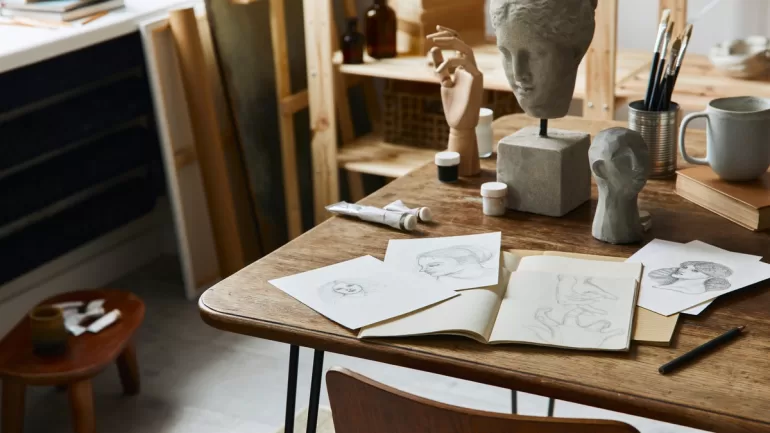ART & DESIGN
Uncover the creative revolution of 3D printing in the art and design industry—enhancing access, sustainability, and imaginative freedom.
BY EMMA RADEBOUGH, ARTCENTRON
The Role of 3D Printing in the Art and Design Industry
3D printing has revolutionized the realm of art and design, providing limitless creative opportunities for both artists and designers. By merging traditional crafting methods with cutting-edge technology, this innovation empowers creators to bring their most intricate ideas to life. From conceptual art sculptures to functional design prototypes, 3D printing in the art and design industry is rewriting the rules of what is possible in creative industries.
A New Medium for Creative Expression
For centuries, artists relied on materials such as clay, stone, and canvas to bring their visions to life. Today, 3D printing adds a new layer of dimensionality to creativity. It enables creators to effortlessly experiment with forms, textures, and scales. Additionally, this creative process would have been much more challenging with traditional methods.
Digital tools allow artists to create highly detailed works ranging from intricate geometric art to lifelike sculptures. The ability to conceptualize virtually and bring ideas into the physical world with precision is inspiring. More importantly, it is a new wave of multimedia art that bridges the gap between tradition and innovation.
Democratizing Art and Design
Perhaps one of the most exciting aspects of 3D printing is its accessibility. Once considered a tool exclusively for large-scale manufacturers and elite designers, advancements in this technology have put 3D printing within reach of independent artists, hobbyists, and small studios.
Artists can now use affordable 3D printers to experiment, iterate, and refine their designs at their own pace. This democratization has led to a more diverse creative landscape, as designers with unique perspectives now have the tools to share their visions without significant barriers.
Combining Sustainability and Innovation
Sustainability is becoming a growing concern in the art and design sectors, and 3D printing offers a meaningful solution. Artists and designers can reduce material waste since this process only uses the exact amount of material required to produce each object.
Furthermore, designers are beginning to experiment with bioplastics and recycled materials as printing mediums, pushing the boundaries of sustainable innovation. This pairing of environmental responsibility with artistic creativity highlights the potential for both industries to make meaningful contributions to eco-friendly practices.
Challenges and Learning Opportunities
Despite its potential, 3D printing can come with hurdles. Many creators encounter common mistakes made while 3D printing. Mistakes include underestimating the importance of proper calibrations or neglecting to account for material compatibility. However, these challenges provide an opportunity for learning and growth.
Mistakes invite experimentation and can often inspire new ideas, pushing artists to refine their techniques and continually improve. Engaging with the process helps build both technical confidence and a deeper connection to the craft.
Redefining Creativity
The influence of 3D printing in the art and design industry is only beginning. From architecture to fashion and fine art, this technology continues to expand creative horizons and inspire innovation. Now is an exciting time for artists and designers to explore their full potential, fueled by new tools, access to ideas, and opportunities for collaboration.
